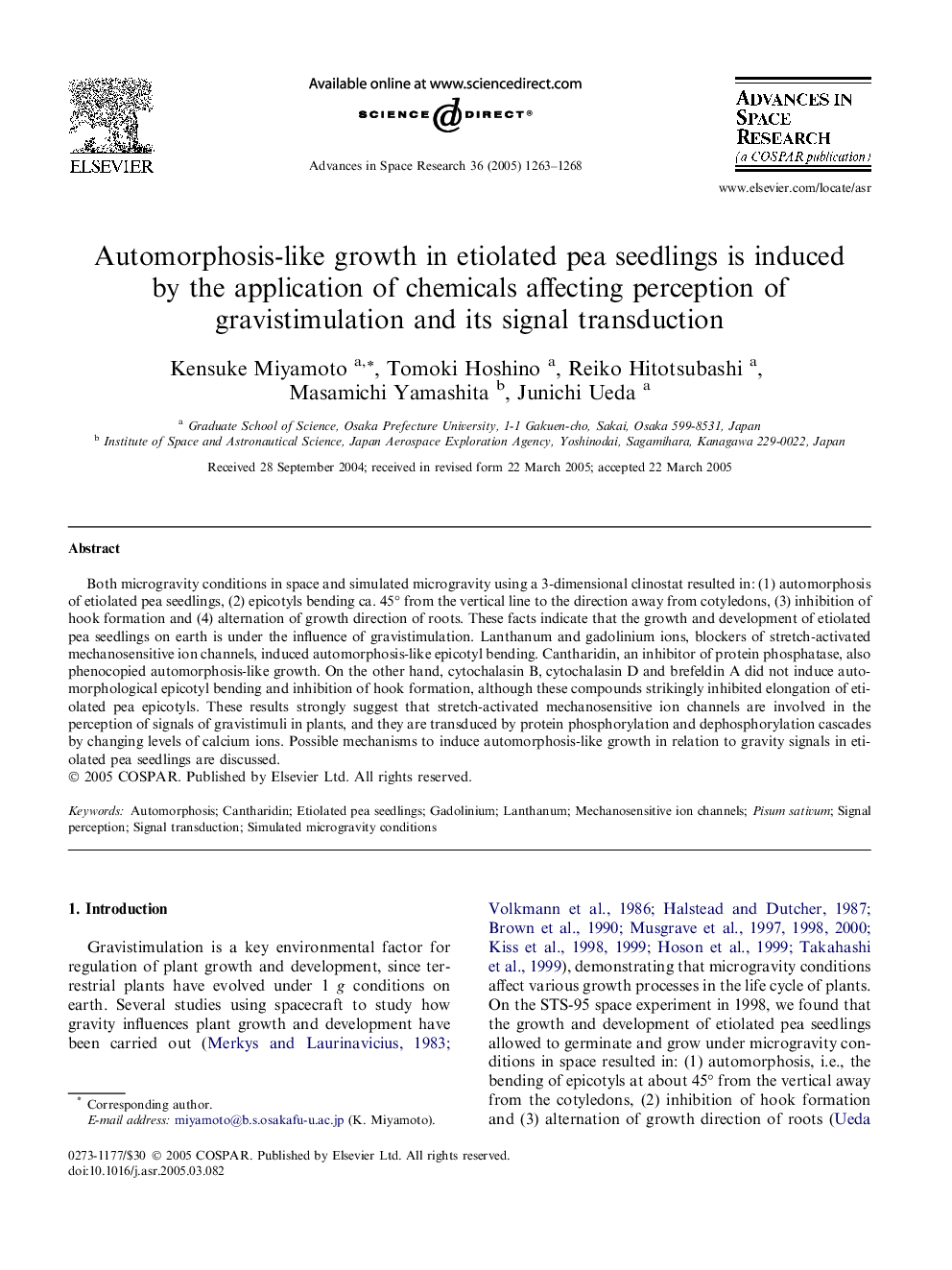| Article ID | Journal | Published Year | Pages | File Type |
|---|---|---|---|---|
| 10694696 | Advances in Space Research | 2005 | 6 Pages |
Abstract
Both microgravity conditions in space and simulated microgravity using a 3-dimensional clinostat resulted in: (1) automorphosis of etiolated pea seedlings, (2) epicotyls bending ca. 45° from the vertical line to the direction away from cotyledons, (3) inhibition of hook formation and (4) alternation of growth direction of roots. These facts indicate that the growth and development of etiolated pea seedlings on earth is under the influence of gravistimulation. Lanthanum and gadolinium ions, blockers of stretch-activated mechanosensitive ion channels, induced automorphosis-like epicotyl bending. Cantharidin, an inhibitor of protein phosphatase, also phenocopied automorphosis-like growth. On the other hand, cytochalasin B, cytochalasin D and brefeldin A did not induce automorphological epicotyl bending and inhibition of hook formation, although these compounds strikingly inhibited elongation of etiolated pea epicotyls. These results strongly suggest that stretch-activated mechanosensitive ion channels are involved in the perception of signals of gravistimuli in plants, and they are transduced by protein phosphorylation and dephosphorylation cascades by changing levels of calcium ions. Possible mechanisms to induce automorphosis-like growth in relation to gravity signals in etiolated pea seedlings are discussed.
Keywords
Related Topics
Physical Sciences and Engineering
Earth and Planetary Sciences
Space and Planetary Science
Authors
Kensuke Miyamoto, Tomoki Hoshino, Reiko Hitotsubashi, Masamichi Yamashita, Junichi Ueda,
